








The magazine of the photo-essay

Jan 2017 back issue



photographs by Thomas Kelly
“A free, really high quality photo-essay magazine. Fabulous!”
Stephen Fry. British actor, writer and film & documentary maker


Eight photographers and fourteen writers explore the complex, hidden
world of prostitution in South Asia.
The people in this book are real people, just as you are. If you were born
into a different family, into poverty, into a South Asian village or urban
ghetto, your profile might be in this book. These are stories are written as
the people whom the writers have known personally some for many years
told them to us. These are the photographs that were given to us,” they
said. “We have nothing left to be ashamed of.”
All the photographers come from backgrounds of photo-activism. Some
have spent years behind the brothel curtains. Others have arrived new to
the subject, but not new to its kin—they have shot rural poverty and
urban despair, the female debris of gender aggression, and the
alienation of the ‘untouchables’. The images come from many collective
years of patience: making friends, waiting for permission and avoiding
intrusion. Beatings, broken cameras and nights in jail have been part of
the project.
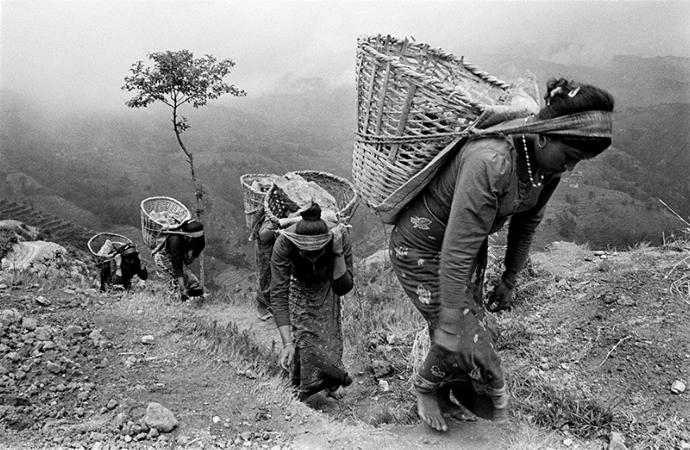
Tamang women carry loads of stones in Sindupalchowk district, central Nepal. Across the Himalayas, women perform
two thirds of the fieldwork and manual labor. Male brokers and returnee Madams, often once trafficked themselves, find
little difficulty recruiting in these regions. Sindupalchowk district, Central Nepal.
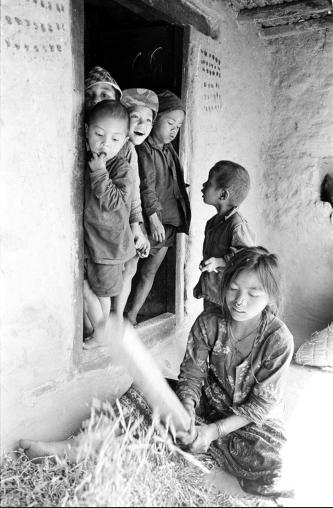
Tamang girl threshes wheat on her front porch as
brothers look on. Girl children from Sindhupalchowk
district are considered high risk for trafficking.
Sindhupalchowk, Nepal.
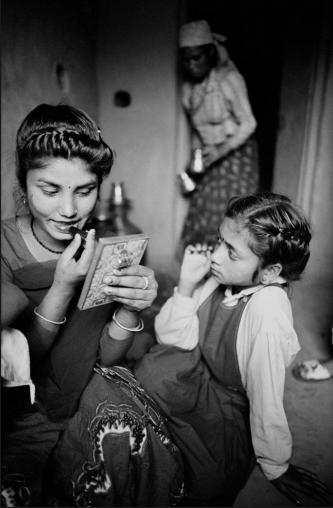
A woman of an untouchable caste prepares herself for
clients while her mother and younger sister look on, many
tribal groups and occupational castes have been forced
into prostitution as their traditional sources of income dry
up in ‘modernizing’ South Asia. Today, many girls of these
‘sex worker castes’ are raised knowing that when they
reach menarche, they will support their families with
clients brought to the home.
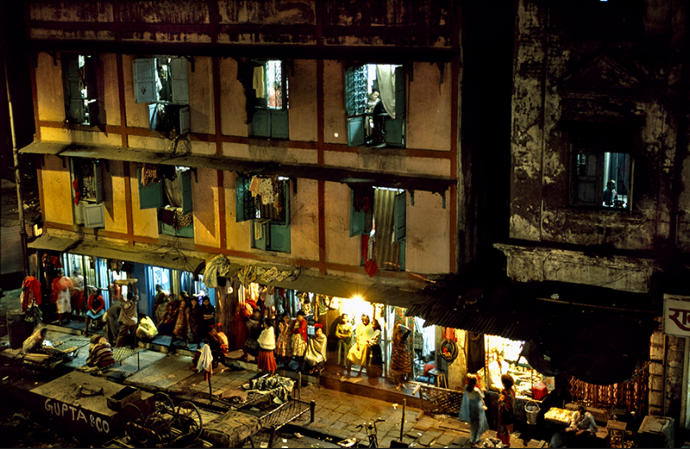
Mumbai: Falkland Road.The brothel district of Kamathipura began in the 17th century by British authorities to satisfy
the carnal demand of Her Majesty’s troops. Soon Chinese, Anglo-Indian, French and other “white” women stocked
flourishing bordellos on a street once known to natives as “Safed Galli, or “white alley.” Nepali women from regions of
Sindupalchowk began arriving after World War II, increasing to trafficked women from throughout the country by the
1980s. A hierarchy of pimps, brothel owners, organized criminals; police and politicians share the profits of this
criminally controlled sex industry. Kamathipura, Mumbai, India
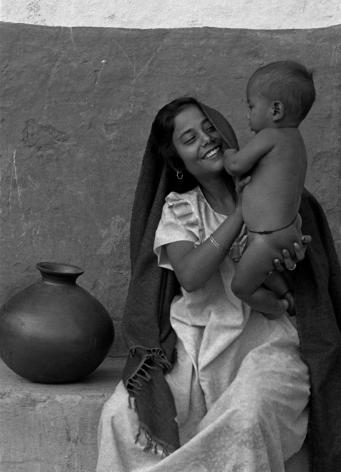
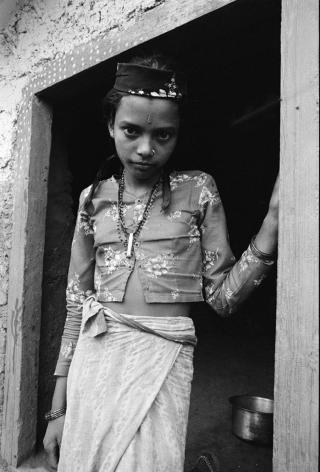
Kailashi, a Badi mother, playing with her son. “I was a
beautiful child with curly hair. The high castes and “big”
people played with me and gave me rupees when I
danced. My father made drums and my mother begged.
And then we came here to this village and we did pessaa.
9“Later, my father died’. Western Nepal.
Young Deuki girls, forbidden to marry are dedicated at
temples of the mother goddess throughout Far
Western Nepal.
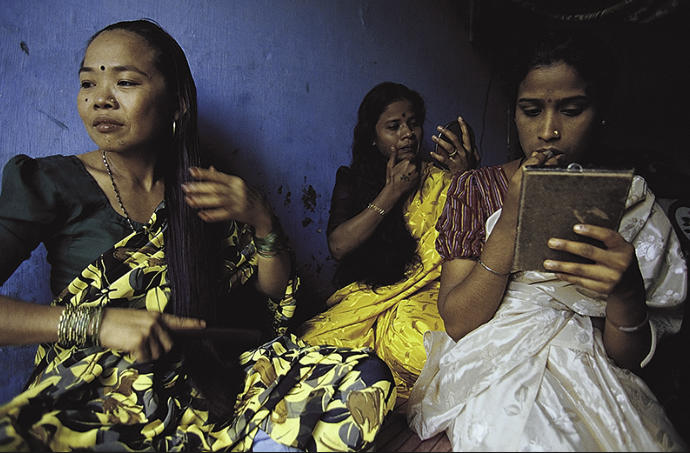
Business begins about 4 p.m. in the Mumbai brothels. Divya, Bishakha and Geetanjali prepare for the evening.
Kamathipura, Mumbai, India.
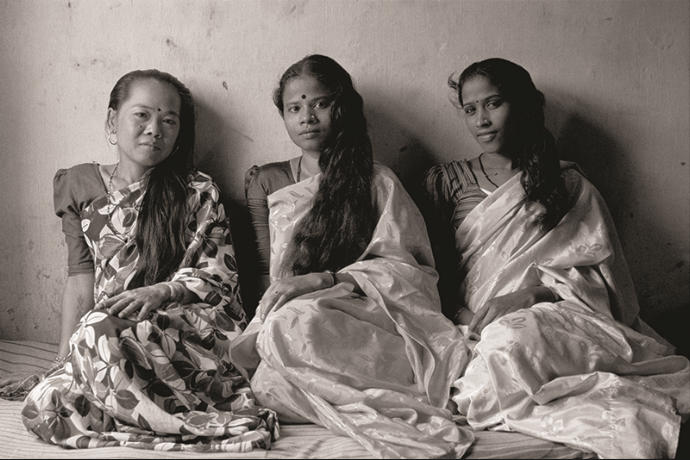
Business begins about 4 p.m. in the Mumbai brothels. Divya, Bishakha and Geetanjali prepare for the evening.
Kamathipura, Mumbai, India.
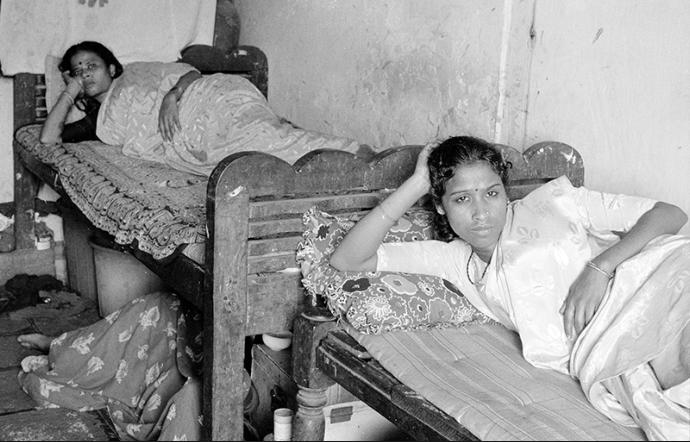
Conditions for prostitutes are marginally better in some brothels, such as the ‘welcome brothels’ of Mumbai, which
serve middle-class clients. Here, women are allowed some time for recreation, and are sometimes permitted to leave
the brothels to get medical care or visit their families, if they have one. Mumbai sex workers relax in the afternoon
before work Mumbai, India
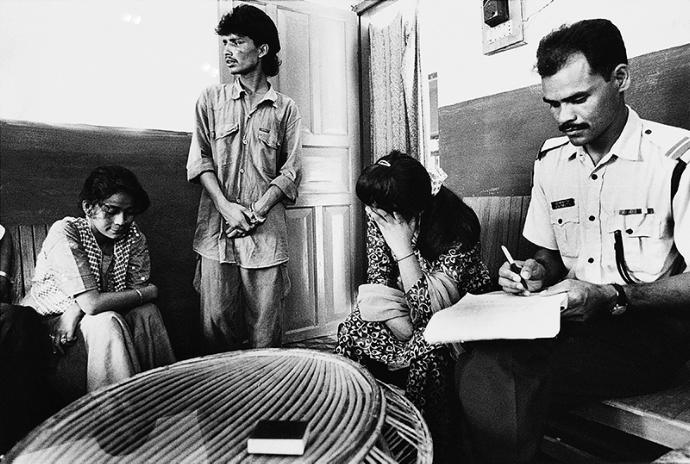
Convicted trafficker Rajan (center) is booked on evidence from two of his Nepali victims, Jamuna (left) and Jyoti (right,
all names changed). Jamuna spent three years in the brothels of Mumbai, India, before being rescued in 1998. Rajan
trafficked Jyoti’s sister in the ealy 1990s, and later sold Jyoti to the same brothel. Hetauda jail, Central Nepal.
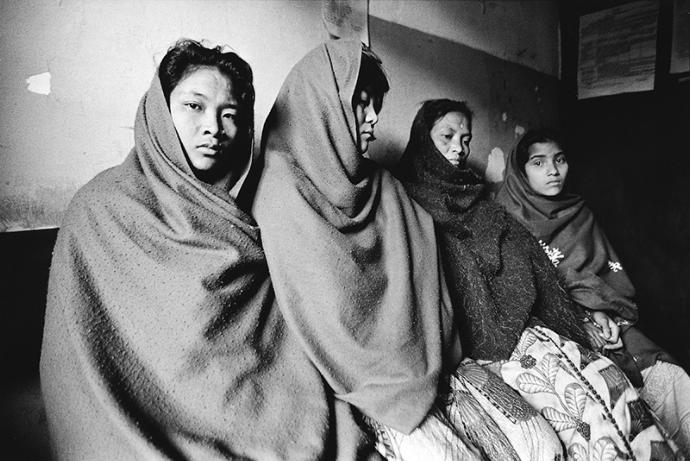
In South Asia, perhaps more women then men are the ‘mules’ that transport girls across national borders. The three
women on the left were arrested in 1999 for the alleged trafficking of Nepali girls to Mumbai. Hanuman Dhoka jail,
Kathmandu, Nepal.
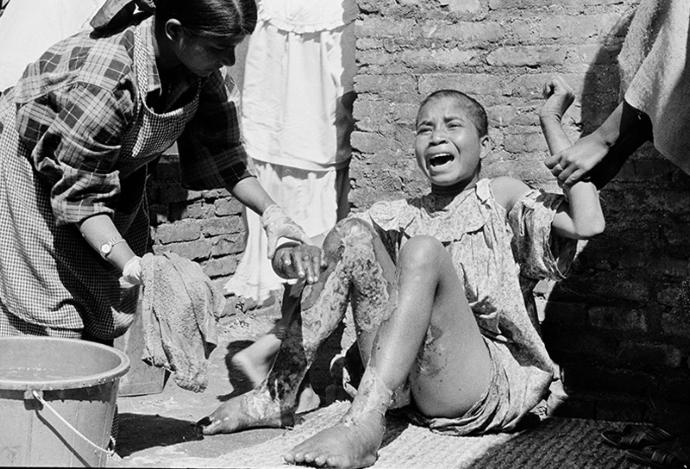
Without the protection of madams, peers and pimps usually fournd in brothel communities, ‘floating’ prostitutes are at
high risks of serious abuse and HIV/AIDS. This floating prostitute was gang raped, doused with kerosene and burned
on a city street. Despite the efforts of physicians and the rehabilitation center Maiti Nepal. She died two weeks later.
Kahtmandu, Nepal
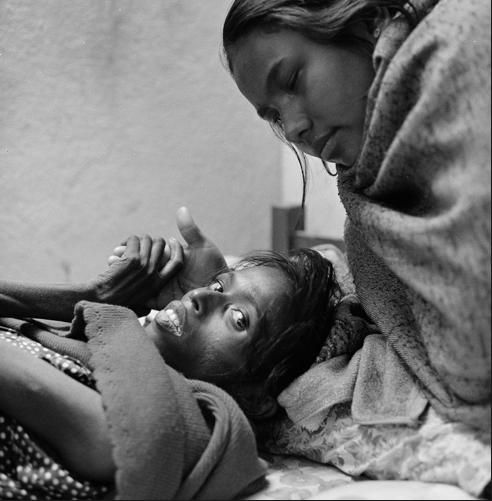
On her last breath. A victim of AIDS.
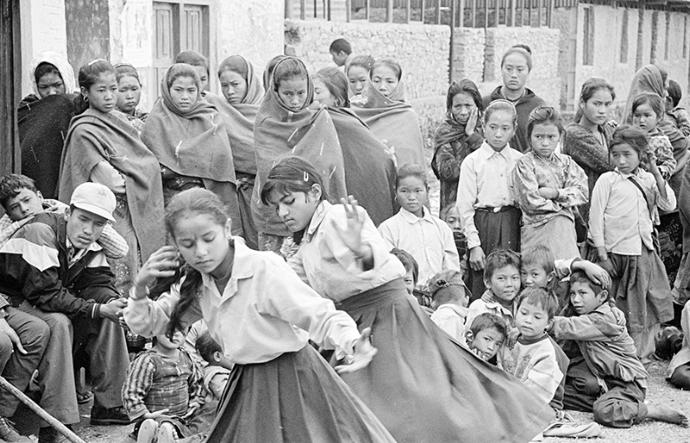
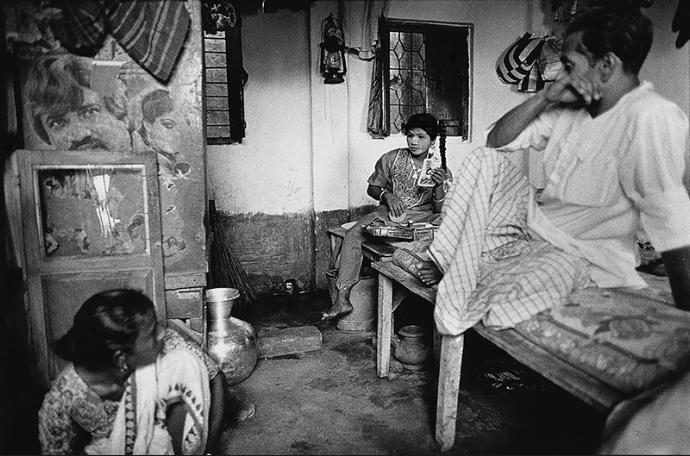
At an awareness-raising activity supported by a Nepali NGO, young village girls dance and sing awareness songs,.
Girls in the villages of this part of Nepal are at high risk of being trafficked. Sindhupalchok, Nepal
In Bangladesh, a large proportion of child prostitutes are either trafficked into the brothels of enters as tsukri—bonded
domestic laborers who are forced into prostitution when they reach pubescence. A child makes up her face as her
madam and an elderly client watch. Tanbazar Brothel, Narayanganj, Banglades.
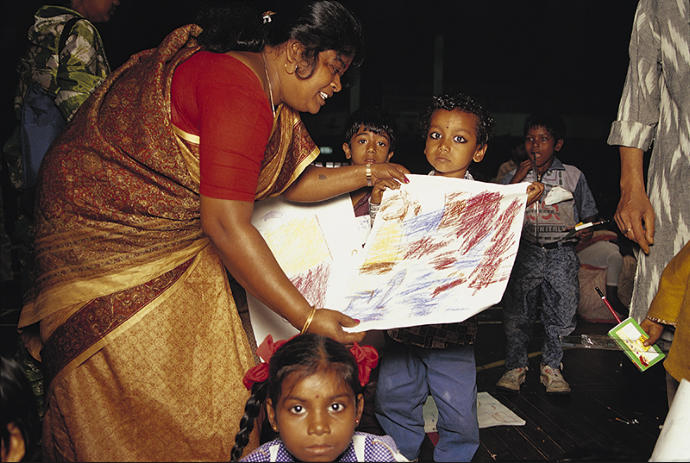
The Durbar Mahila Samanwaya Committee, a collective sex workers in Bengal, works actively with the children of the
community, with the hopes that they can some day lead lives outside the world of prostitution. During ‘sit and draw’
days organized by the DMSC, the children of sex workers gather to play with paper and crayons. This is the first time
that some of these children have ever picked up a crayon Sonagachi, Calcutta, India.
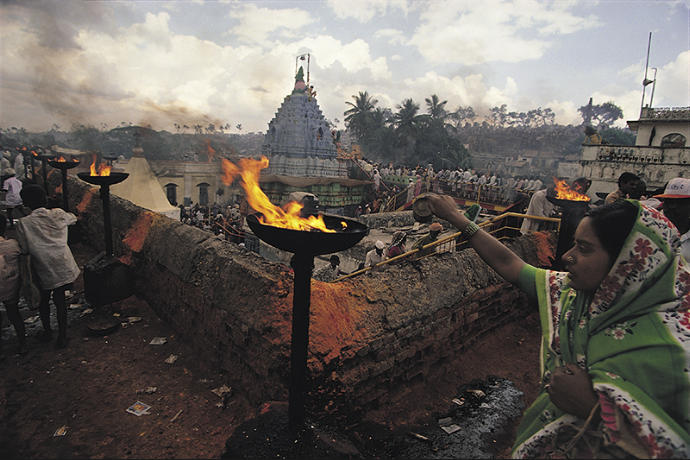
Each year in January, thousands of low caste farmers pilgrimage to the temple of Goddess Yellama, patron deity of the
downtrodden, hijras, and prostitutes. Saturated in turmeric dust, crowds of villagers circumambulate the temple
shouting "Udheyo! Udheyo! Rise Up to the Mother!" Saundatti, Karnataka, India.
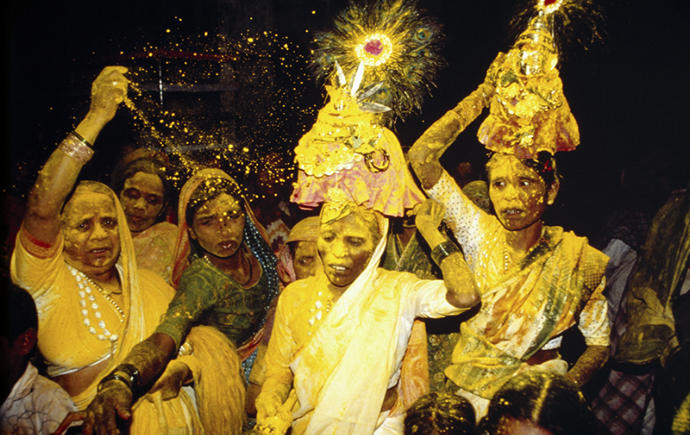
Weaving in trance, drenched in sacred healing turmeric, devadasis ‘handmaidens of the Goddess’ sway through the
crowds, with images of goddess Yellama balanced on their heads, a renewal of the life force at her yearly festival.
Auspicious but impure, according to Medieval temple records, devadasis brought critical income to the temples. Clients
made offerings for physical union with the Goddess in the form of devadasis. Today, Yellama’s devotees are mostly
bonded laborers who till the soil for landlords, and many devadasis find themselves in Mumbai red light districts. HIV
and STD run rampant in these communities. Saundatti, Karnataka, India.
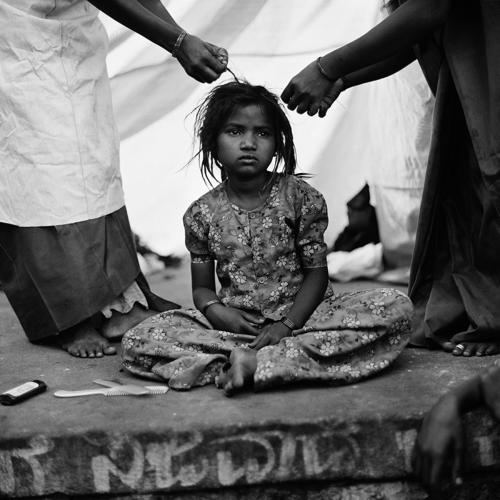
Resisting religious exploitation. Former devadasis are now organized and rebelling
against devadasi system. A volunteer from the activists organization Myrada cuts the
ritual dreadlocks of a devadasi child. When the dreadlocks are cut, it is believed that
the power of goddess is broken Saundatti, Kanataka, India
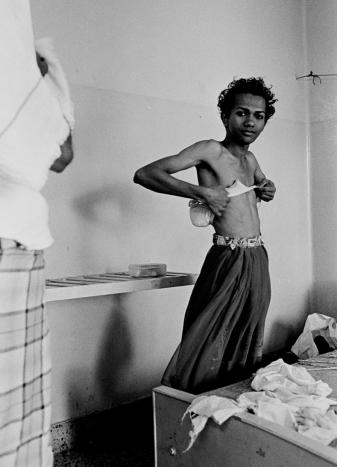
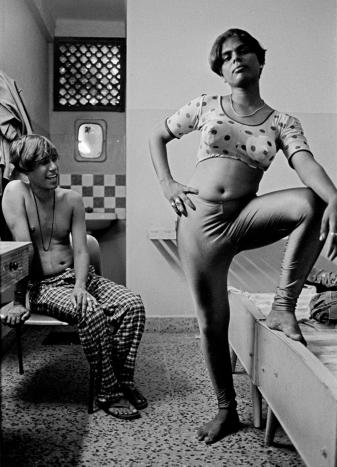
Transvestites. Sahodaran worker of Prakriti Sahodaran,
gets ready to go out for work at the annual Aravan festival
which attracts trans-sexuals from all over the country.
Sahodaran worker named Samson, a counselor for
Prakriti Sahodaran, a men’s sexual health project poses
as he gets ready to go out for work at the annual Aravan
festival which attracts trans-sexuals from all over the
country.






